14+ Sample Technology Grant Proposal
-
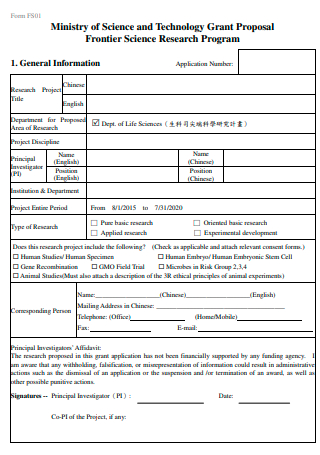
Ministry of Science and Technology Grant Proposal
download now -
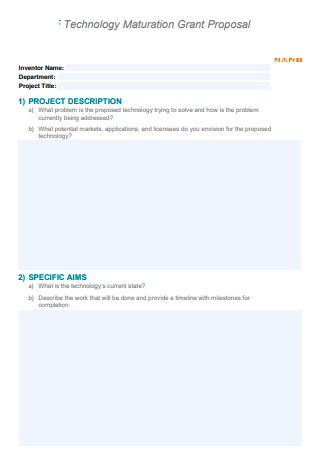
Technology Maturation Grant Proposal
download now -
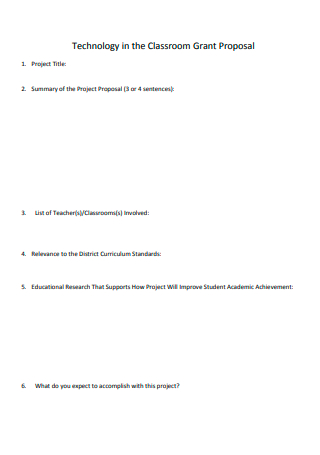
Technology in the Classroom Grant Proposal
download now -
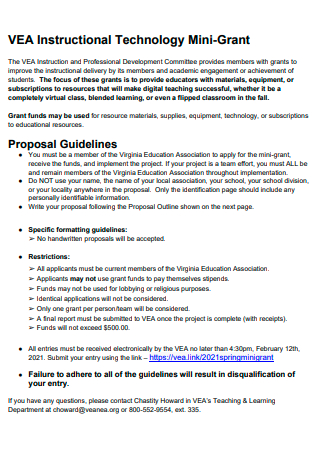
Technology Mini-Grant Proposal
download now -
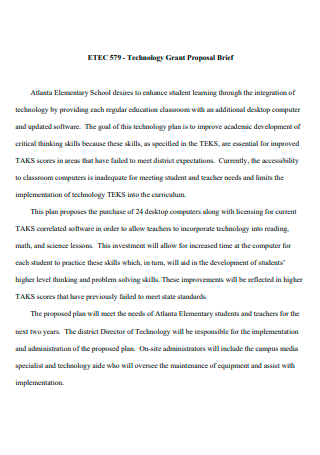
Technology Grant Proposal Brief
download now -
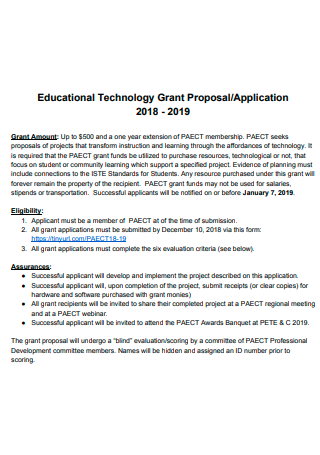
Educational Technology Grant Proposal/
download now -
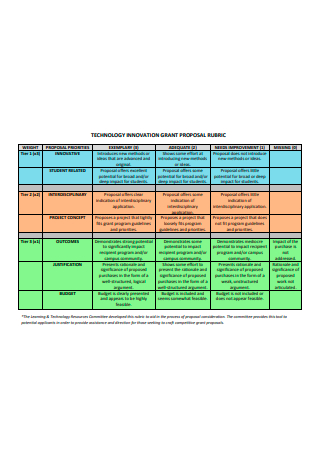
Technology Innovation Grant Proposal
download now -
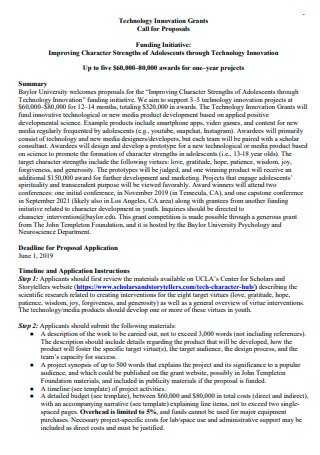
Technology Innovation Grant Call For Proposal
download now -
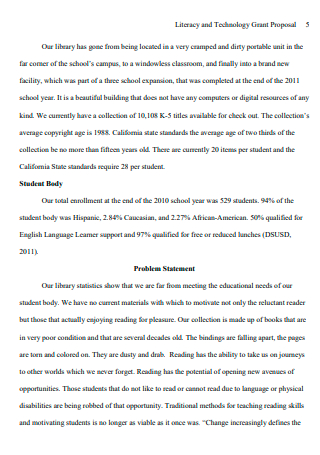
Literacy and Technology Grant Proposal
download now -

Technology Questionnaire Grant Proposal
download now -
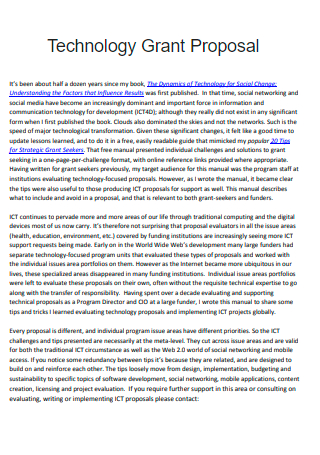
Printable Technology Grant Proposal
download now -
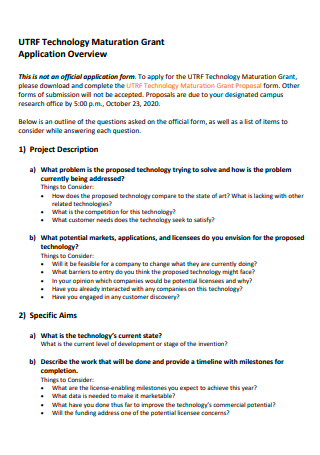
Technology Maturation Grant Application Proposal
download now -
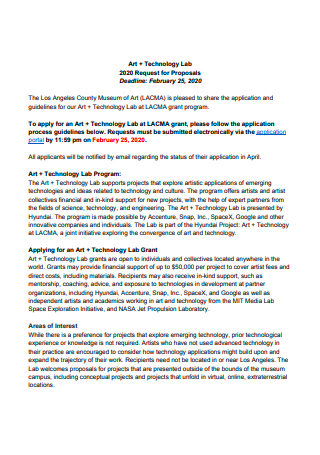
Technology Lab Grant Proposal
download now -

Student Technology Fee Grant Request Form Proposal
download now -
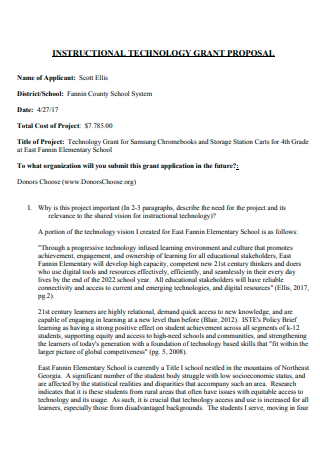
Instructional Technology Grant Proposal
download now
FREE Technology Grant Proposal s to Download
14+ Sample Technology Grant Proposal
What Is a Technology Grant Proposal?
What’s In a Technology Grant Proposal?
Steps in Preparing a Technology Grant Proposal
FAQs
What is a competitive funding grant?
What is a main source of technology grant?
What is the main difference between a grant and a loan?
What Is a Technology Grant Proposal?
First of all, what does a grant mean? A grant is a cash incentive provided by one organization to another, generally given by a firm, foundation, or government, to support a goal or incentivize achievement. Grants must be sought, and the application process is usually competitive. The grant sponsors will also frequently ask you to accomplish something with the money and follow its regulations, such as finish an educational course, advance a business or complete a research project. Grants, unlike loans, do not have to be repaid. This may be a significant benefit, particularly for charity organizations.
A technology grant proposal is a business document that can be used by teachers and schools looking for financing for classroom technology or by charitable organizations looking to improve their fundraising software, among other technical demands. This document can be used to define the program’s goals, technical requirements, long-term viability, and budgetary requirements. Nonprofit organizations that are slipping behind other groups doing the same job may find that technology grants are the key to catching up, and strong technology grant proposals can increase their chances of winning this grant money.
What’s In a Technology Grant Proposal?
Here are the following important elements that should be present inside a technology grant proposal; some more elements may still be needed depending on the source of the grant funds.
Steps in Preparing a Technology Grant Proposal
If you want to win a technology grant for your nonprofit organization or for your institution, writing an effective grant proposal is one of the key things that you need to keep in mind. With that being said, here are the steps to be followed in creating one:
1. Start With the Cover Letter
This is the first step that needs to be done when writing the technology grant proposal. When writing the cover letter of the proposal, always make sure that it is done correctly since this part serves as the first impression of the entire proposal document. Your cover letter is the ideal opportunity to pique the funder’s interest. The letter, unlike the remainder of your grant proposal, maybe less conventional and approach the reader directly. The main goal of the cover letter is to persuade the reader to read your proposal. Keep it brief and concise, and just include what is required in the cover letter.
2. Introduce Who You Are
After writing the cover letter of the technology grant proposal, follow through with the introduction of who and what your organization is all about. Share as much relevant information about your architecture, history, mission, experience, and so on in this phase of creating the technology grant request. You must demonstrate that your institute or organization has the capability and ability to satisfy all deliverables, not just from an execution standpoint, but also from a legal, safety, and quality one. In this phase, you must remain objective and avoid deviating too far from the subject.
3. Construct the Problem Statement and the Objectives
After introducing your organization or institute in the previous step, it’s time to write down the problem statement and the goals and objectives of the proposal. The problem statement is a critical component of the grant proposal format. The problem statement should describe why your institute or organization has a challenge and how you can give a solution. When developing the problem statement, emphasize the sense of urgency. Another critical step in the grant submission process is describing your aims and objectives clearly. Details regarding the target goal and how achievement will be judged should be included. This part is critical for describing the rewards that the grantee, community, government, or client will receive from their investment.
4. State How You’re Going to Address the Problems
After stating the problem statement and the goals and objectives section of the grant proposal, this is the step where you’ll state the methodology part of the proposal. In this stage, list everything you’ll need, such as any essential amenities, transportation, and support services, to complete the project and meet the success criteria. A competent project leadership discipline and procedures, with comprehensive requirements established and individual tasks described, will maintain a strong emphasis on tasks, deliverables, and outcomes. In this section of the technology grant submission, you must also demonstrate the cost-effectiveness of your approaches.
5. Write the Evaluation Section
After completing the methodology section of the technology grant proposal, this step then follows. This section of the technology grant proposal is used to keep track of the program’s progress. All funders will search for assessments, thus this is one of the most critical aspects of creating a grant proposal. It also covers the timeline for assessment, who will do the evaluation, the precise abilities or items required, and the cost of the project’s evaluation phase. One of the most essential factors here is whether you will do the review with your own team or pay an outside firm to perform it for you.
6. Complete With a Summary
When everything is done, go back to the beginning section of the technology grant proposal so that the summary section can be created. An executive summary, often known as a proposal summary, is simply a quick description of the full proposal. It presents your institution, proposal, project goals, and, in essence, your grant request. It should be detailed and explicit; it should get to the point swiftly, and it should be realistic and factual. Even though it is positioned at the beginning of the paper, this section should be prepared last because it is an overview of the whole proposal.
FAQs
What is a competitive funding grant?
Competitive funding, often known as discretionary financing, is a form of grant in which potential beneficiaries submit grant applications and reviewers pick recipients based on the submissions. Recipients are chosen at random, and the grant is awarded depending on the merits of the grant application. For research grants, competitive financing is frequently employed.
What is a main source of technology grant?
If you’re in a nonprofit organization, the main source of a technology grant that can work best for your organization would be a foundation. Foundations might range from well-known institutions to your local community foundation. The benefit of these funds is the assistance they may provide. Local nonprofit grant foundations will frequently provide coaching on how to apply for grants as well as the opportunity to meet with sponsors in person. Despite the fact that most of these awards don’t give out huge amounts of money, if your organization is looking for methods to improve the technology in your workplace, these funds may be able to help.
What is the main difference between a grant and a loan?
The primary distinction between grants and loans is that loans must be repaid whilst grants do not. A grant is basically free money provided to someone who satisfies particular conditions or utilizes the money to achieve a certain goal. A loan, on the other hand, is an amount of money borrowed from an individual or organization in return for future payback plus interest.
As stated earlier, a technology grant proposal serves as one of the best ways to maximize an organization’s chances of success when they apply for outside funding. If you find this task to be intimidating, there are plenty of sample templates that are present in this article you can choose from so that you have a reference when making one.
